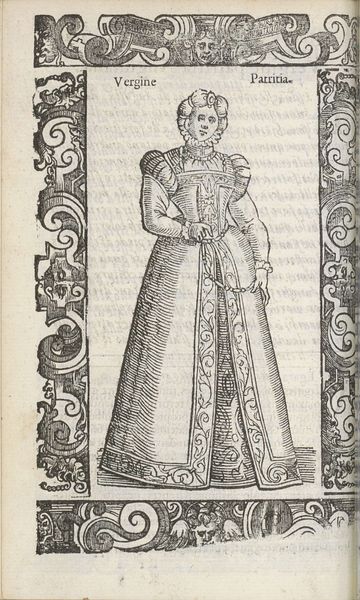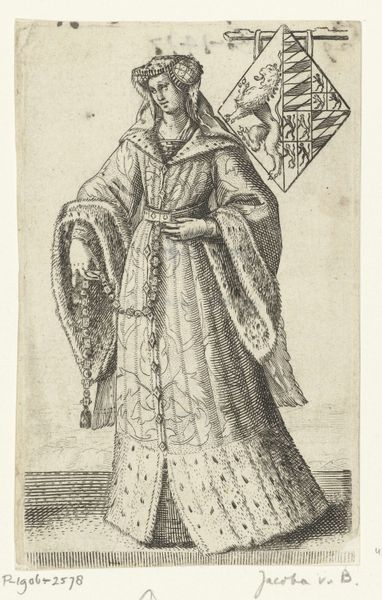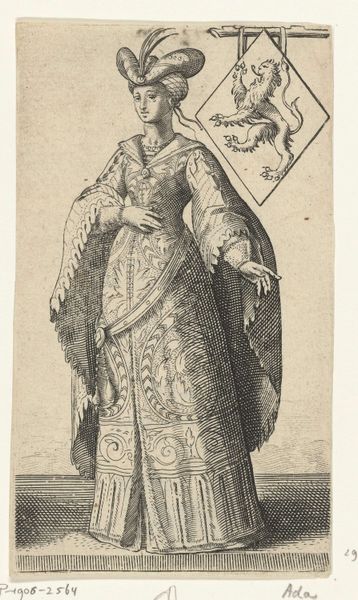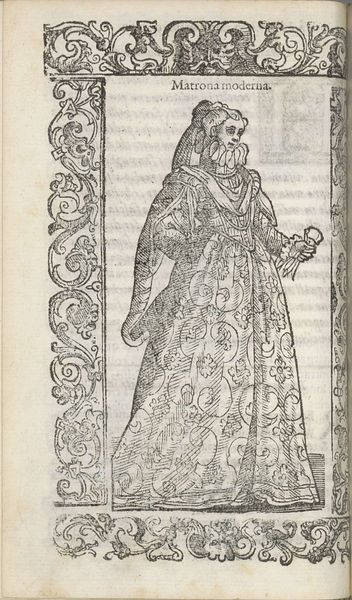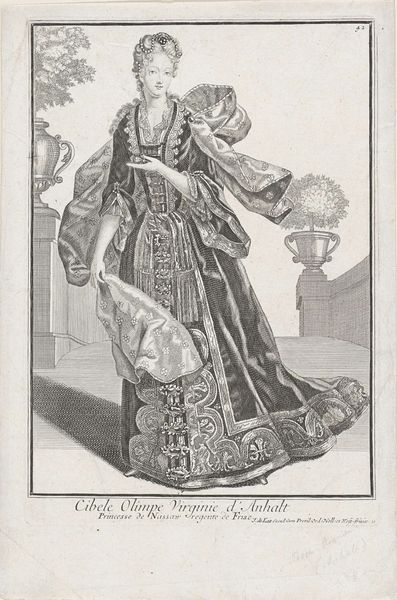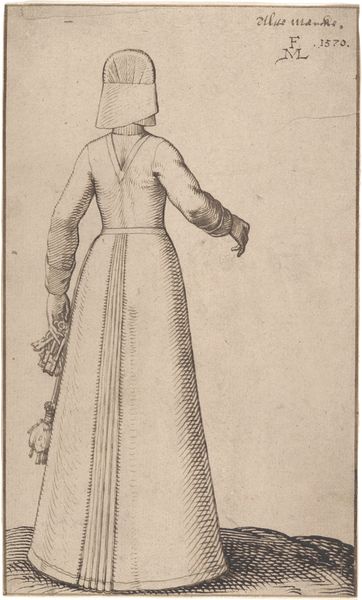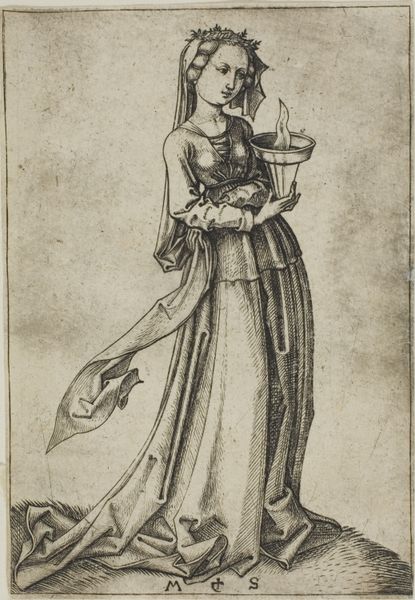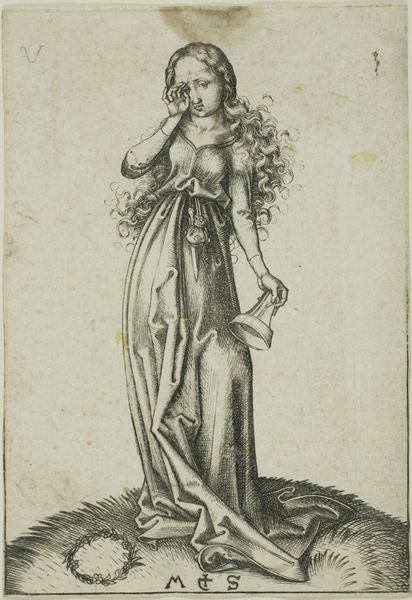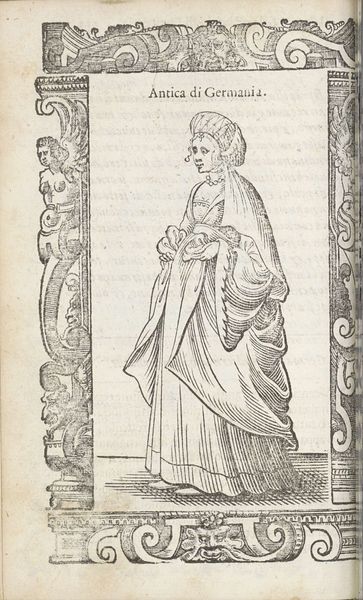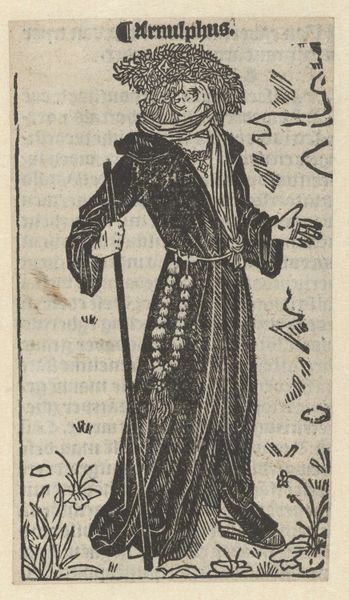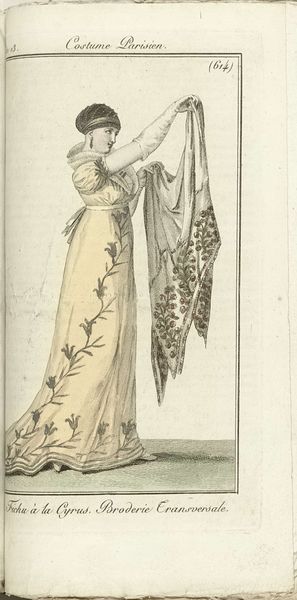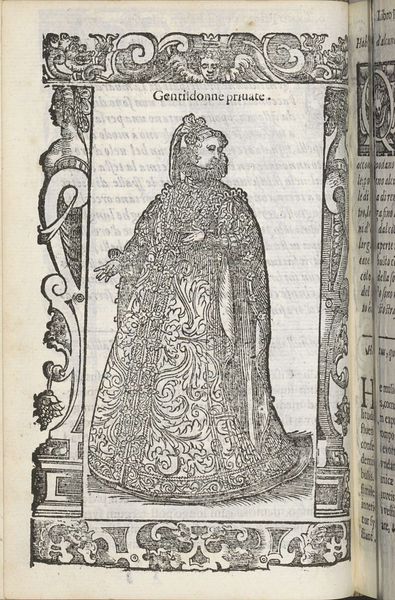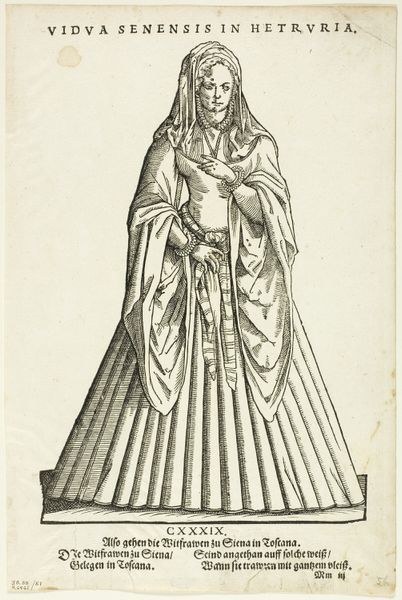
engraving
portrait
baroque
figuration
line
history-painting
northern-renaissance
academic-art
engraving
Dimensions: height 193 mm, width 114 mm
Copyright: Rijks Museum: Open Domain
Curator: This engraving by Christoffel van Sichem I, from 1601, depicts Maria, Duchess of Burgundy. What are your initial thoughts? Editor: It feels oddly formal and yet lifeless. The detail in the dress is remarkable, but the figure herself seems stiff, almost like a paper doll. Curator: The "lifelessness", as you describe it, is an interesting point. As an engraving, the emphasis is on line and form. Consider the technical skill involved in rendering the texture of her gown and veil with such precision. The use of hatching creates a sophisticated tonal range, given the limitations of the medium. Editor: While the technique is impressive, it's hard to ignore the power dynamics at play here. This is a posthumous portrait of a woman who, through marriage, controlled vast territories. Her agency is subsumed by the expectations placed upon her as a vessel for dynastic power. Her extended arm might suggest agency, but to me it gestures more to the empty possibilities of high birth within the confines of royal marriage and its production. Curator: An insightful interpretation. Perhaps that rigidity also underscores the importance of dynastic portraiture—a demonstration of status and lineage that transcends mere personal expression. The engraving flattens her features and likeness in a very particular way. We also must keep in mind, while dated 1601, the work is a later engraving done after Maria’s death in 1482, making accuracy less likely, perhaps furthering our theory that we aren't seeing a person, but instead lineage in graphic form. Editor: Yes, and to see her adornments in such specific detail allows us to begin discussing issues of access and the privilege implicit in the ownership of material culture and the legacy this confers on some and not on others. Even something as "simple" as access to fabrics can begin unpacking vast historical complexities, particularly when considering she holds those material resources now in name alone, and by extension through her future heirs. Curator: A point well-taken. Considering both its aesthetic qualities and its historical context, this engraving becomes far more complex and suggestive. Editor: Indeed. What at first seems like a rather straightforward portrait unlocks numerous pathways for considering art's role in shaping and reinforcing systems of power.
Comments
No comments
Be the first to comment and join the conversation on the ultimate creative platform.
